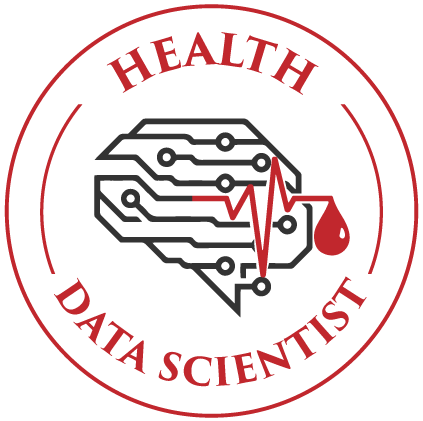When you hear of radiological incidents, it may come as a surprise to learn about VA’s involvement in the emergency response.
Well, for about four decades, VHA has owned one of the oldest, continuously evolving emergency response teams in the federal government: the Medical Emergency Radiological Response Team (MERRT). A critical capability that’s charged of VA explicitly, the MERRT supports public health preparedness and response during radiological emergencies.
“Most people don’t realize that when a radiological event happens, VHA’s MERRT is one of the primary federal resources activated,” said Dr. Scott Bartley, a Nuclear Medicine physician and health informatics officer.
Bartley said VA’s almost 40 years of contingency planning, capability building and ready state has the MERRT well-suited to respond to radiological incidents whenever needed nationwide.
“We always put the Veteran first, but also support the general public when called on,” he said.
A legacy of readiness

Formed in the days of the Cold War, the MERRT evolved alongside the changing landscape of radiological threats. The foundation of the MERRT was established in 1988 when President Ronald Reagan issued Executive Order 12657, Federal Emergency Management Agency assistance in emergency preparedness planning at commercial nuclear power plants. By 1992, VA formed the MERRT, its only specialized team dedicated to radiological medical response.
The MERRT’s membership is voluntary, comprising of VA physicians, health physicists, emergency pharmacy service and emergency managers who deploy to augment and advise institutional health care providers in response to nuclear or radiological incidents. Unlike many emergency response teams, the MERRT, consisting of a 37-member team at full capacity, manages mass casualty events involving radiation.
“The MERRT isn’t just a domestic asset, it’s part of a global learning community,” said Bartley. “Every time there’s a radiological incident around the world, we adapt, we update our protocols and we strengthen our response capabilities.”
Not just for Veterans

Though housed within VHA’s Office of Emergency Management, the MERRT’s mission extends far beyond serving Veterans. In fact, the team is a key component of VA’s Fourth Mission. The MERRT is part of national planning, serving as a bridge between VA medical centers and the broader federal emergency response system.
“Radiological events don’t respect geographical boundaries,” said Jeffrey Quinn, MERRT operations officer and emergency manager. “That’s why it’s critical we have a team like the MERRT to coordinate across agencies and provide specialized care when it’s needed most.”
Quinn referenced incidents when the MERRT may be called upon, such as the Fukushima Daiichi and Chernobyl nuclear power plant disasters involving worldwide radiological contamination. He said some of the MERRT’s domestic missions involved dangerous radiological exposures when immediate patient movement and treatments were necessary.
Having served in the Army and Air Force from 1986 to 2017, Quinn remains personally committed to the safety and wellbeing of fellow Veterans. During his military service, he acquired specialized skills in various assignments, such as a combat search and rescue medic and member of a Weapons of Mass Destruction Civil Support Team, that prepared him for his place on the MERRT.
“I never lost the sense of duty to my country and desire to care for those in need,” Quinn said. “I can continue that service here, in this role, to help people in need.”
Behind the scenes, always ready
The MERRT’s highly trained experts are on standby around the clock and equipped to deploy nationwide in the event of an incident. They work alongside local, state and federal agencies, including the Departments of Energy and Homeland Security and FEMA, to manage medical services during radiological emergencies.
The team conducts regular drills and exercises to ensure constant readiness. One recent exercise simulated a dirty bomb detonation in a major U.S. city, pushing responders to manage mass casualties, decontamination efforts and public health risks.
Aside from highly trained specialists, the MERRT deploys with personal radiation screening and monitoring equipment, radiation detection meters, radioisotope identification devices, portal monitors and decontamination kits. The team can also support special event assessments requesting radiological medical treatment capability.
Preparedness starts with awareness
Stan Bravenec, currently leading VHA’s MERRT, pointed to a recent real-world example of the team’s engagement in an industrial radiological exposure incident. The incident was detailed in a peer-reviewed journal article published by Cambridge University Press “Disaster Medicine and Public Health Preparedness.” Titled Americium Inhalational Exposure with Successful Chelation Therapy, and co-authored by Bravenec, it highlights the interagency coordination with VHA’s MERRT during an incident involving the inhalation of americium-241, unstable and potentially harmful chemical elements sometimes found in industrial manufactured products.
Despite its critical role, the MERRT often operates behind the scenes. But, as the nation grapples with evolving threats, from aging nuclear infrastructure to potential acts of terrorism, the MERRT remains highly relevant in national preparedness.
“Emergency response isn’t just about fire trucks and ambulances,” said Quinn. “It’s also about specialized knowledge, precise coordination and the ability to act fast in highly complex situations. The MERRT brings that and more to the table.”
Author: nikkiverbeck
